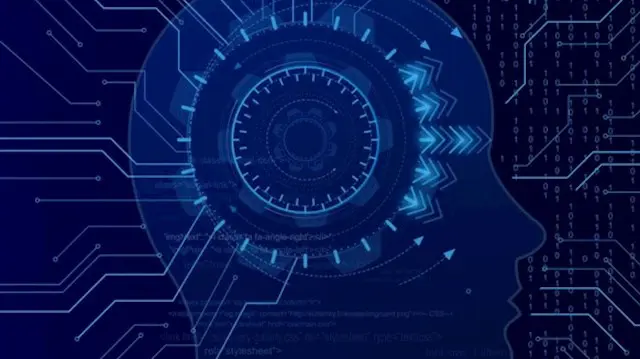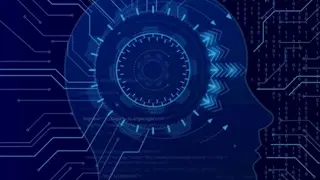
Deep Learning Foundation
Self-paced videos, Lifetime access, Study material, Certification prep, Technical support, Course Completion Certificate
Uplatz
Summary
- Certificate of completion - Free
- Reed courses certificate of completion - Free
Add to basket or enquire
Overview
Uplatz offers this comprehensive course on Deep Learning Foundation. This is online self-paced video course. You will be awarded Course Completion Certificate at the end of the course.
If you want to break into AI, this Deep Learning Foundation course will help you do so. Deep Learning is one of the most highly sought after skills in tech. In this course, you will learn the foundations of Deep Learning, understand how to build neural networks, and learn how to lead successful machine learning projects. You will learn about Convolutional networks, RNNs, LSTM, Adam, Dropout, BatchNorm, Xavier/He initialization, and more. You will master not only the theory, but also see how it is applied in industry. In the subsequent courses, you will learn how to implement Deep learning ideas through and in TensorFlow, which we will teach.
Deep learning engineers are highly sought after, and mastering deep learning will give you numerous new career opportunities. Deep learning is also a new "superpower" that will let you build AI systems that just weren't possible a few years ago.
In this course, you will learn the foundations of deep learning. When you finish this course you'll be able to:
- Understand the major technology trends driving Deep Learning
- build, train and apply fully connected deep neural networks
- Know how to implement efficient (vectorized) neural networks
- Understand the key parameters in a neural network's architecture
This course also teaches you how Deep Learning actually works, rather than presenting only a cursory or surface-level description. So after completing it, you will be able to apply deep learning to a your own applications. If you are looking for a job in AI, after this course you will also be able to answer basic interview questions.
Deep Learning is a subfield of machine learning concerned with algorithms inspired by the structure and function of the brain called artificial neural networks. Deep learning is an Artificial Intelligence (AI) function that imitates the workings of the human brain in processing data and creating patterns for use in decision making. Deep learning is a subset of machine learning in artificial intelligence that has networks capable of learning unsupervised from data that is unstructured or unlabeled. Also known as deep neural learning or deep neural network.
In deep learning, a computer model learns to perform classification tasks directly from images, text, or sound. Deep learning models can achieve state-of-the-art accuracy, sometimes exceeding human-level performance. Models are trained by using a large set of labeled data and neural network architectures that contain many layers.
Some of the key features of Deep Learning are:
- Deep learning is an AI function that mimics the workings of the human brain in processing data for use in detecting objects, recognizing speech, translating languages, and making decisions.
- Deep learning AI is able to learn without human supervision, drawing from data that is both unstructured and unlabeled.
- Deep learning, a form of machine learning, can be used to help detect fraud or money laundering, among other functions.
Most deep learning methods use neural network architectures, which is why deep learning models are often referred to as deep neural networks. The term "deep" usually refers to the number of hidden layers in the neural network. Traditional neural networks only contain 2-3 hidden layers, while deep networks can have as many as 150.
Deep learning models are trained by using large sets of labeled data and neural network architectures that learn features directly from the data without the need for manual feature extraction.
Deep Learning vs. Machine Learning
One of the most common AI techniques used for processing big data is machine learning, a self-adaptive algorithm that gets increasingly better analysis and patterns with experience or with newly added data.
If a digital payments company wanted to detect the occurrence or potential for fraud in its system, it could employ machine learning tools for this purpose. The computational algorithm built into a computer model will process all transactions happening on the digital platform, find patterns in the data set, and point out any anomaly detected by the pattern.
Deep learning, a subset of machine learning, utilizes a hierarchical level of artificial neural networks to carry out the process of machine learning. The artificial neural networks are built like the human brain, with neuron nodes connected together like a web. While traditional programs build analysis with data in a linear way, the hierarchical function of deep learning systems enables machines to process data with a nonlinear approach.
Curriculum
Course media
Description
Module 1 - Introduction to Deep Learning
- Deep Learning: The Series Introduction
- What is a Neural Network
- Three reasons to go Deep
- Your choice of Deep Net
- Deep Learning Market
Module 2 - Deep Learning Models
- Restricted Boltzmann Machines
- Deep Belief Network
- Convolutional Network
- Recurrent Network
Module 3 - Additional Deep Learning Models
- Autoencoders
- Recursive Neural Tensor Network
- Generative Adversarial Networks
Module 4 - Deep Learning Platforms & Libraries
- What is a Deep Net Platform
- H2O.ai
- Dato GraphLab
- What is a Deep Learning Library
- Theano
- Caffe
- TensorFlow
- Keras
Who is this course for?
Everyone
Requirements
Passion to achieve your goals
Career path
- Deep Learning Engineer
- Machine Learning Engineer
- AI Researcher - Complex Algorithms, Deep Learning Models
- Computer Vision and Deep Learning Scientist
- Data Scientist & Senior Data Scientist
- Deep Learning Research and Development Engineer
- AI Application Developer
- Data Scientist - Deep Learning
Questions and answers
Currently there are no Q&As for this course. Be the first to ask a question.
Certificates
Certificate of completion
Digital certificate - Included
Course Completion Certificate by Uplatz
Reed courses certificate of completion
Digital certificate - Included
Will be downloadable when all lectures have been completed
Reviews
Currently there are no reviews for this course. Be the first to leave a review.
Legal information
This course is advertised on reed.co.uk by the Course Provider, whose terms and conditions apply. Purchases are made directly from the Course Provider, and as such, content and materials are supplied by the Course Provider directly. Reed is acting as agent and not reseller in relation to this course. Reed's only responsibility is to facilitate your payment for the course. It is your responsibility to review and agree to the Course Provider's terms and conditions and satisfy yourself as to the suitability of the course you intend to purchase. Reed will not have any responsibility for the content of the course and/or associated materials.


